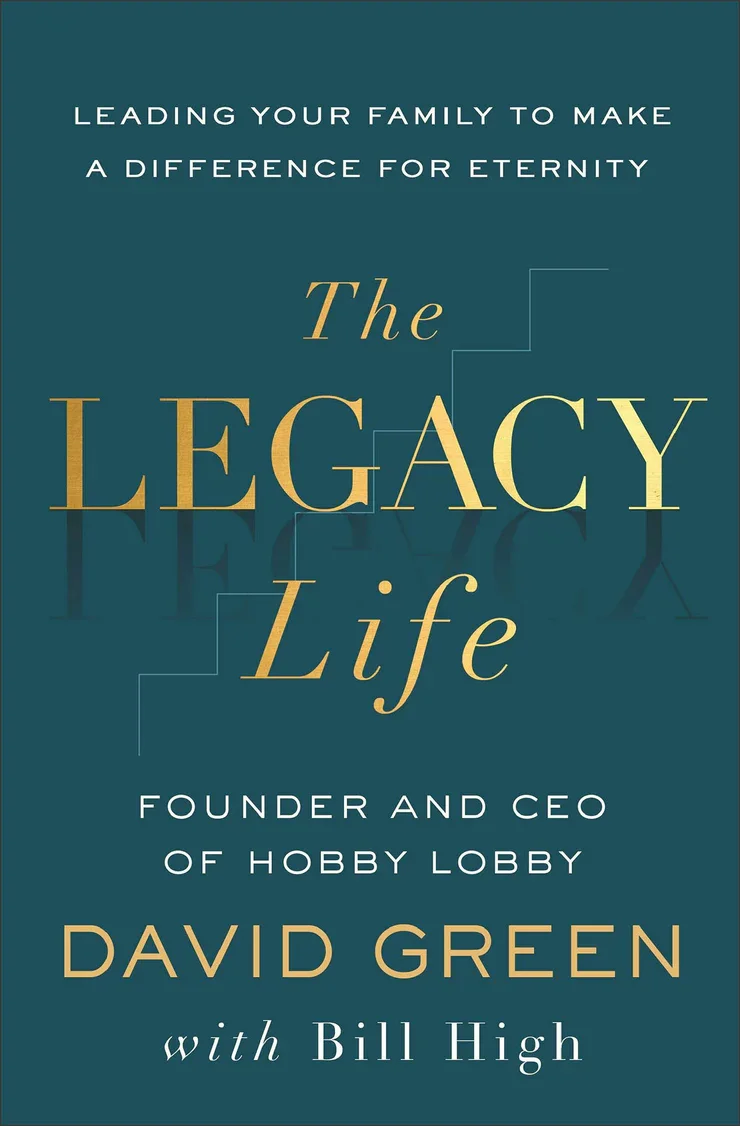Legacy > Exit: How Hobby Lobby’s David Green Builds for 150 Years, Not Retirement
David Green (right), founder and CEO of Hobby Lobby, and Bill High (left), founder of Legacy Stone, discuss their book The Legacy Life on the H2 Leadership Podcast.
Reading time: 7–9 minutes
From our recent interview with David Green, founder & CEO of Hobby Lobby. And Bill High, founder of Legacy Stone, about their latest book, The Legacy Life. Listen here
Quick Summary
Legacy > exit.
Stewardship > ownership.
Slow > fast.
Write it down. Meet regularly. Tell the stories. Repair the past.
Start with five values and one 90-day practice—today.
We live in a “build to sell” world. Grow fast, exit, disappear to the beach.
David Green doesn’t buy it. At 83, the Hobby Lobby founder is still leading, still building, and still thinking beyond himself. Alongside partner Bill High, he’s helping leaders trade the exit mindset for a legacy mindset—one that aims at 150 years, not the next quarter.
Below are the biggest takeaways from our conversation—plus practical steps to set a legacy in motion starting today.
Legacy ≠ Just Generosity
Generosity is a symptom of a healthy family; legacy is the system that sustains it.
Green and High draw an important distinction:
Generosity flows from health (time, talent, treasure offered back to God and others).
Legacy is multi-generational formation—values, stories, and practices that persist.
“Generosity is a symptom of a healthy family.”
Inheritance vs. Legacy (They’re Not the Same)
An inheritance transfers resources.
A legacy transfers values, identity, and a way of life.
Green’s priority isn’t net worth; it’s that children, grandchildren, and great-grandchildren love and serve with their whole lives. Money may help, but formation is the point.
Purpose, Calling, and Assignment (Why Retirement Isn’t the Finish Line)
Bill High references Greg Surratt’s helpful model:
Identity: who you are (unchanging).
Calling: what you’re for (unchanging: honor God, love people).
Assignment: where you apply it in this season (changes).
You may transition assignments—but you don’t retire from identity and calling. That’s why Green continues to work: purpose sustains people.
Stewardship > Ownership
Owners obsess over now. Stewards think in generations.
Green’s lens: “God owns it; we manage it.” That shift slows you down, clarifies decisions, and reframes growth as a way to serve more people, not stockpile more for yourself.
Reflection: What are you building that will last beyond you?
Slow Down to Think Generationally
Hurry erodes legacy. Trees don’t grow on 2x speed.
Legacy requires the pace of cultivation: prepare the soil, plant, water, weed, harvest—repeat. We may not enjoy the shade of every tree we plant, but somebody will.
“The best time to plant a tree was 20 years ago. The second best time is now.”
The Core Tool: A Written Family (or Team) Constitution
Hobby Lobby’s family meets around a written document: mission, vision, values—each anchored to Scripture. They don’t reinvent it annually; they reaffirm it and celebrate it.
Try this with your family or leadership team:
Draft 5 core values (single words or short phrases).
Write a clear mission (what we do every day).
Capture a compelling vision (where we’re headed / 10–20 years).
Anchor each item to a source (Scripture, principles, research, or a shared story).
Review annually and reference often.
Tell the Stories (They Form Identity)
Families and teams don’t become who they say they are; they become who they remember they are. Green watched his parents tithe vegetables when cash was scarce. That story formed him.
Make storytelling a practice:
Add a “story spotlight” to weekly stand-ups or monthly family dinners.
Capture short wins and answered prayers.
Keep a running archive (notes doc or shared folder).
Repair the Past or You’ll Repeat It
Most families and teams fracture over unrepaired conflict. Legacy demands a process for making things right.
A simple repair rhythm:
Name the wound (specific, not vague).
Own your part (no “but”).
Ask for forgiveness; offer it when asked.
Agree on a better pattern going forward.
Record changes inside the code of conduct.
Set a Legacy in Motion (Don’t Just “Leave” One)
Leaving something behind is passive. Setting legacy in motion is active and now.
Your 7-Step Starter Plan (this month)
Name five values. (Keep them short and memorable.)
Draft a mission line. (“We exist to…”)
Schedule a recurring meeting. Weekly or monthly—non-negotiable.
Adopt a code of conduct. How we live, work, resolve conflict.
Capture stories. One story per meeting—health, generosity, service.
Map stewardship. What’s “in our hands” (time, talent, treasure, relationships)?
Choose one practice to implement for 90 days (Sabbath dinner, family meeting, team retro, budget for generosity, etc.).
“Legacy is what you set in motion—not what you hope someone picks up.”
What This Looks Like Over Time
Relational health deepens (trust, unity, clarity).
Structure strengthens (rhythms, reviews, decisions).
Next-gen readiness rises (they’re trained, included, responsible).
That’s the backbone of a 100-year family or a durable, healthy organization.
Make It Practical with H2 (Your Next Right Step)
Leadership Coaching
Build healthy + high impact leadership habits you can sustain.Listen to the Full Conversation
Hear David Green and Bill High unpack the mindsets and practices behind a legacy life.Book a Breakthrough Session
30 minutes. One constraint. One clear next step.


